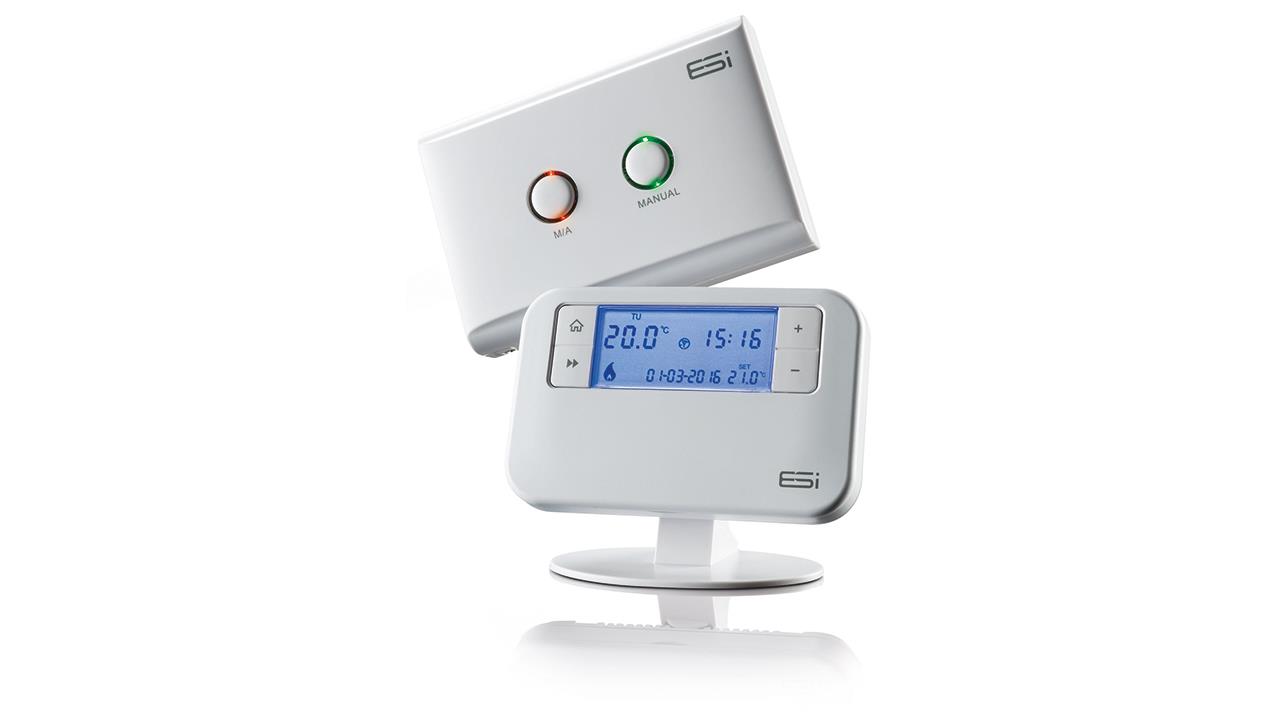

With a wealth of control options currently available on the market, Tristan James, Managing Director at ESi Controls, explains why it’s important to make sure you install the solution that best suits the customer’s needs.
Effective heating controls are a vital part of an efficient central heating system. With the requirement now for condensing boilers, ErP-compliant heating systems, circulating pumps in the majority of applications, and ever more energy-efficient radiators or underfloor heating systems to share the heat around the home, finding where additional efficiences in the home can be made is increasingly challenging. As such, it makes sense to look more closely at heating controls and consider OpenTherm options, which can help reduce energy use by up to 15%.
The decision as to which control to include in a newbuild heating installation or in a heating system replacement project is not always straightforward, with a wealth of options available and a range of combinations of components that can enable the homeowner to control the heating in their home. But it’s vital that the controls installed meet the requirements and, on occasion, the limitation, of the potential users.
There is no point installing the latest connected controls if the homeowner or tenant is unable to use them. If they need a straightforward dial control, that is what you should install.
Clever use of controls can help minimise energy consumption by ensuring each room is at the right temperature for comfort, while avoiding overheating. This will keep your customer’s home cosy and cut their energy bills which, at the end of the day, is what they want from you.
While most boilers these days feature in-built controls that look after the level and flow of heating and hot water, the range of heating controls that can be used around the home has grown to allow more control day-to-day than even a few years ago.
The selection of programmers and timers available today are varied and range from simple to the far more complex – or smart. It is important to choose the controls you install based on the homeowners who will need to use them. So, it is vital that all domestic controls are as easy to use as possible.
Most controls manufacturers offer a range of programmers from a simple 1-channel version to a 3-channel multi-purpose programmer which enables the installer to comply with Part L of the Building Regulations by providing separate timed heating control for living and sleeping zones in a home, while also providing timed control of hot water.
Many will offer 24-hour, 5/2 day, and seven-day programming options for each channel. And, for social housing or private landlords, there are programmers that also feature a ‘landlord’ option to encourage social housing and private tenants to allow access for annual maintenance, which is often a real challenge.
Unless you have a smart system which allows you to control individual radiators in your home, there’s usually only one room thermostat per heating system. It controls the temperature of the whole house based on the temperature of the room it’s in. You can purchase a range of programmable room thermostats – both hard-wired and wireless models. A room thermostat is best located in the living room or the warmest room in the house.
A programmable room thermostat lets the homeowner choose what times they want the heating to be on and what temperature it should reach while it’s on. A seven-day timer makes it possible to set a different heating pattern for each day, while 5/2 programming offers different options for weekdays and weekends.
For people who prefer a control dial to push button controls, these are still available from some manufacturers. Available with or without an LCD display, the homeowner simply has to turn the dial to the desired temperature. Again, either hard-wired or wireless options are available. And for people who simply want a standard mechanical room thermostat, these are still available as well.
It’s horses for courses and there are options for every potential user.
If you'd like to keep up-to-date with the latest developments in the heating and plumbing industry, why not subscribe to our weekly newsletters? Just click the button below and you can ensure all the latest industry news and new product information lands in your inbox every week.